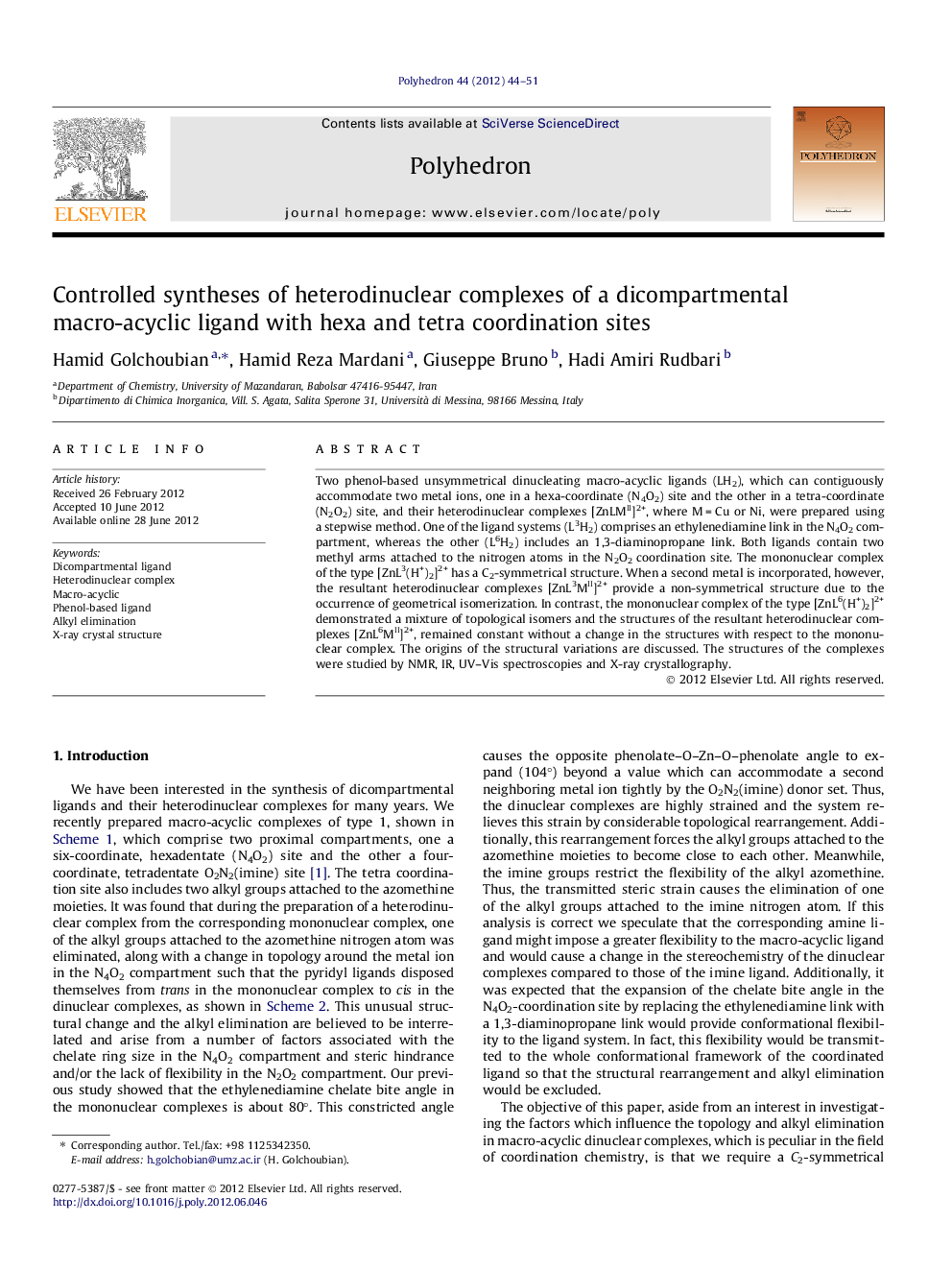| کد مقاله | کد نشریه | سال انتشار | مقاله انگلیسی | نسخه تمام متن |
|---|---|---|---|---|
| 1334723 | 979446 | 2012 | 8 صفحه PDF | دانلود رایگان |

Two phenol-based unsymmetrical dinucleating macro-acyclic ligands (LH2), which can contiguously accommodate two metal ions, one in a hexa-coordinate (N4O2) site and the other in a tetra-coordinate (N2O2) site, and their heterodinuclear complexes [ZnLMII]2+, where M = Cu or Ni, were prepared using a stepwise method. One of the ligand systems (L3H2) comprises an ethylenediamine link in the N4O2 compartment, whereas the other (L6H2) includes an 1,3-diaminopropane link. Both ligands contain two methyl arms attached to the nitrogen atoms in the N2O2 coordination site. The mononuclear complex of the type [ZnL3(H+)2]2+ has a C2-symmetrical structure. When a second metal is incorporated, however, the resultant heterodinuclear complexes [ZnL3MII]2+ provide a non-symmetrical structure due to the occurrence of geometrical isomerization. In contrast, the mononuclear complex of the type [ZnL6(H+)2]2+ demonstrated a mixture of topological isomers and the structures of the resultant heterodinuclear complexes [ZnL6MII]2+, remained constant without a change in the structures with respect to the mononuclear complex. The origins of the structural variations are discussed. The structures of the complexes were studied by NMR, IR, UV–Vis spectroscopies and X-ray crystallography.
Figure optionsDownload as PowerPoint slideHighlights
► Two macro-acyclic ligands and their heterodinuclear complexes were prepared.
► The macrocyclic ligand contains a N4O2 coordinate site and a N2O2 coordination site.
► Geometrical isomerization occurs during the introduction of the second metal ion.
► The N–Zn–N bite angle in the N4O2 site is responsible for the isomerization.
Journal: Polyhedron - Volume 44, Issue 1, 31 August 2012, Pages 44–51